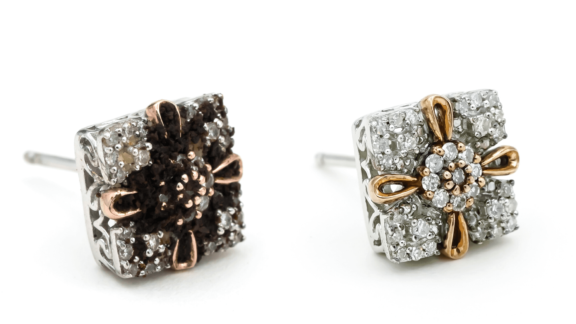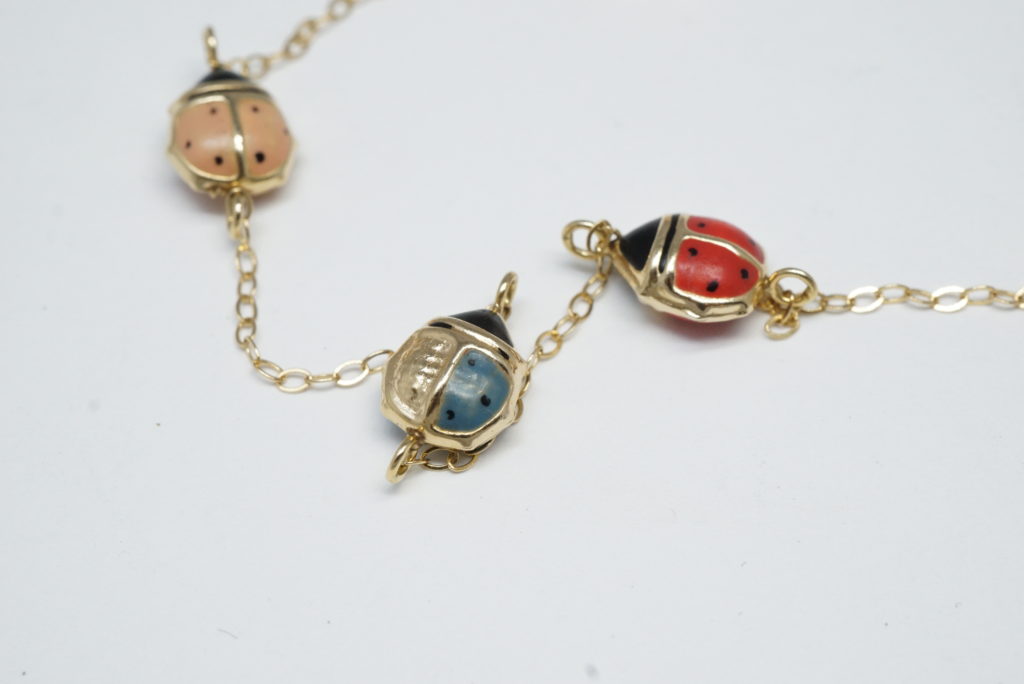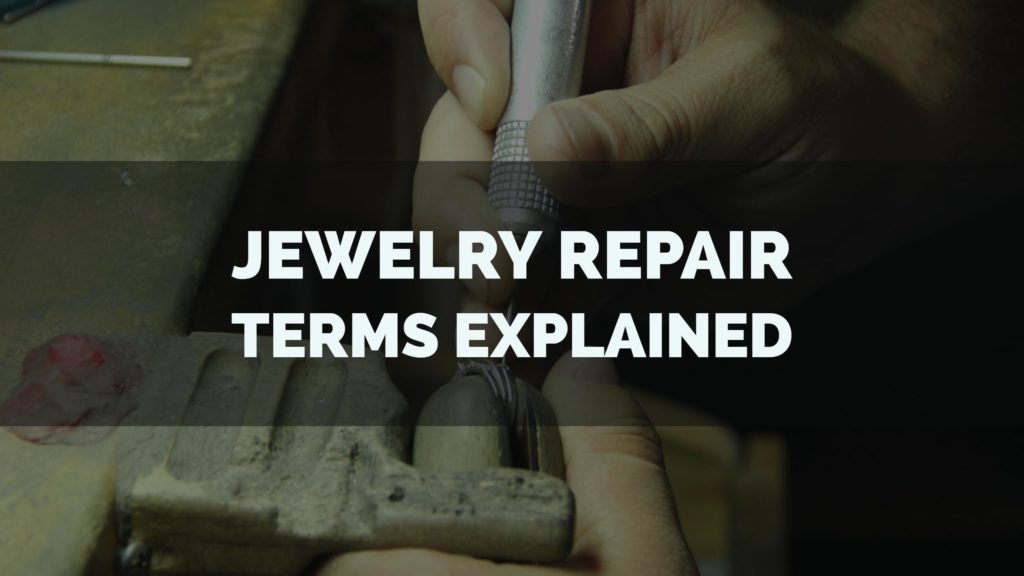How to Value and Refurbish Inherited Jewelry
Written by Annabelle
August 6, 2019
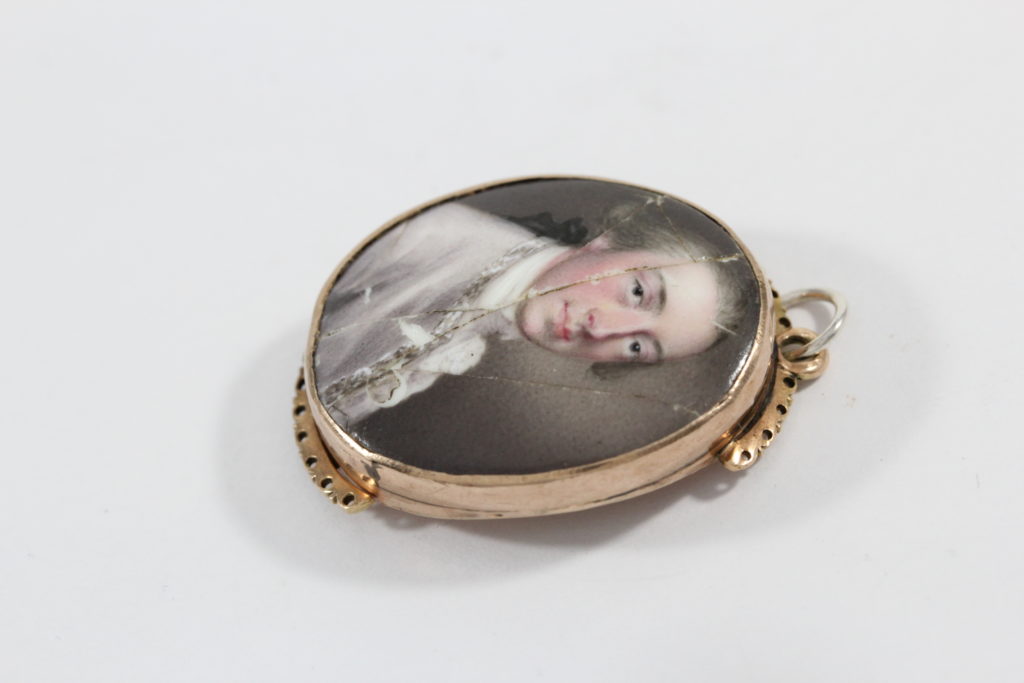
Recently a client reached out to us about a cache of jewelry he had just received from his mother. He wasn't quite sure what to do with it, but he did want to know if the jewelry was fine in terms of metal and stone quality. We were more than happy to help him determine the inherited jewelry value, and it got us thinking- what can people do with these pieces? Read on to learn more.
Valuing Inherited Jewelry
The first step is to figure out the inherited jewelry value. This can be a complicated process, so here's a breakdown of what should be done.
- Metal and diamond testing: The best way to check if your jewelry is valuable is to take a look at the materials. Do your research on metal and diamond testing beforehand, and find a reputable jeweler who is willing to test your items in front of you.
To test metal, the jeweler will take your item and rub it on a ceramic plate. This will leave a streak behind on the plate that comes from the item's metal. The jeweler drops acid on the streak, and the resulting reaction will indicate if the item has precious metal content.
For diamonds and other gemstones, it's best to take these pieces to a gemologist. A quick check with a Presidium tester (also provided by most jewelers) can also help to identify the stone. - Sort the jewelry: Once you've tested your pieces for precious metal and genuine gemstones, it's time to sort them out. Don't be too disappointed if your pieces are not precious- vintage costume jewelry has a collectible value and may sell nicely on the market! Separate the fine jewelry from the costume jewelry for now and look for stamps on the pieces. Typically, there are at least two stamps on an item; one will indicate metal content, while the other indicates the manufacturer/designer. Most of the time it'll be difficult to identify possible manufacturers, but if you know the approximate time period when these pieces were owned, that may help you narrow down the origin.
- Get an appraisal: If you really think you have something interesting, regardless of costume or fine jewelry, it's time to get an appraisal. Keep in mind there are different kinds of appraisals- for fine jewelry with stones, take it to a gemologist who can give you an estimated retail value based on the stone quality and size. Costume jewelry has more of a historical value, and so it's better to take those pieces to an antique/vintage dealer, or a luxury consignment store if the costume jewelry is from a brand name such as Hermes.
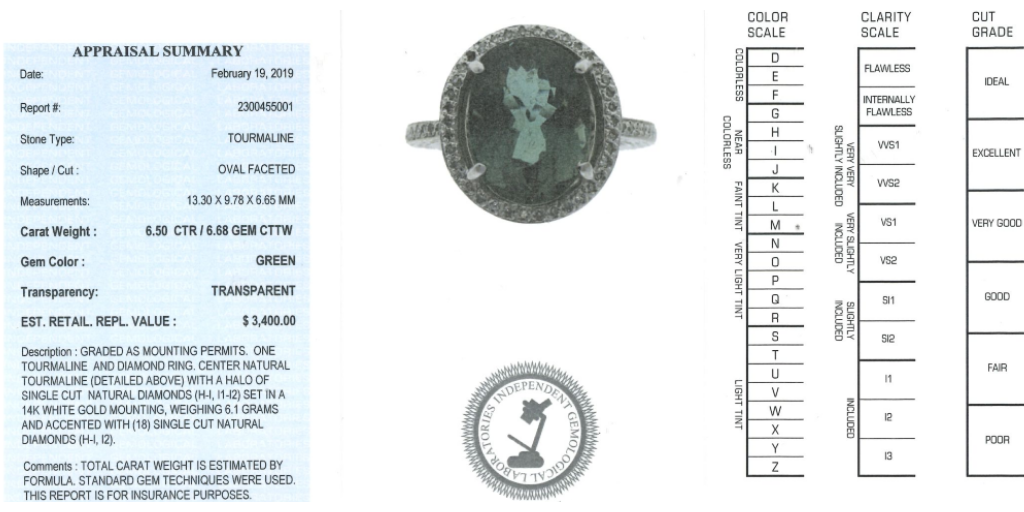
A green tourmaline ring and its appraisal certificate.
Refurbishing and Repair
Now that you've gotten the inherited jewelry value, it's time to consider what you want to do with your pieces. During the assessments the jewelers or gemologists may have told you about minor flaws or damage the jewelry's sustained after years of wear. Whether you decide to keep or sell them, restoration will be necessary.
- Jewelry repair: Inherited jewelry repair varies depending on the type of jewelry and the work needed. Fine jewelry is usually easier to fix, as jewelers will have the standard gold, silver, and platinum materials and expertise in-house. Costume jewelry, however, is a toss-up; some jewelers won't even touch base metals because of their unpredictable nature when exposed to heat, like a jeweler's torch.
Some common repairs include:- Shank replacement: For old rings with very worn and fragile bands, it'll be necessary to remove the back of the old band and replace it with a stronger and thicker piece of metal. This ensures that the back of the ring won't crumple in when worn.
- Earring back repair: Earrings are notoriously fragile, and backs easily snap off and go missing after years of wear. You can't wear or sell earrings without the backs, so this is a necessary repair.
- Chain soldering: Necklaces and bracelets can break, and the only proper way to repair them is by chain soldering. The jeweler takes the two ends and adds solder, a low-heat alloy that will act as a glue to hold the pieces together.
- Jewelry refurbishing: Even if your jewelry isn't damaged, chances are that it's scratched and tarnished. Jewelry refurbishing cleans the item up and makes it bright and ready for wear or sale. A jeweler will refurbish your item via the following steps:
- Polishing: The jewelry is buffed out by a professional polisher via a steel wool wheel, which gently rubs the surface and removes scratches. If the item had a particular finish, such as a brushed or matte finish, the jeweler can reapply that look.
- Plating: Certain pieces, such as costume jewelry, are gold-plated. This plating fades over time, which exposes the base metal underneath. In order for the jeweler to plate the jewelry, he'll have to polish it and clean it before putting it into the gold plating tank. The tank then runs electricity through a solution of water and metal salts, causing a chemical reaction that fuses gold to the surface of the jewelry.
- Cleaning: Inherited jewelry can be quite dirty from years of being worn and sitting in storage. To clean it, the jeweler will put most items into an ultrasonic cleaner, which is a large tank of water that blasts the jewelry with bubbles generated from soundwaves. The bubbles reach areas that cannot be cleaned by hand, and knock out any grime or dirt stuck in those crevices.
- Jewelry conversion: This process involves changing the item from one type of jewelry to another type of jewelry. For instance, converting pins to rings and pendants will probably be a good move if you're looking to wear or sell these pieces, since pins aren't very popular these days. The conversion depending on the type of the current item and the desired item type.

This chart details the most common types of jewelry conversion. The possibilities are endless!

Two vintage sterling silver pins that we converted into rings for one of our clients.
Selling
If you're looking to sell your items, eBay, Rubylane, and Etsy are great places to start. These marketplaces have safe transaction methods and are commonly frequented by customers for vintage and pre-owned jewelry. Just make sure that you are honest when disclosing information; if you genuinely don't know if an item is solid gold, don't list it in the description. Put down gold-tone or gold-colored to avoid any issues post-sale. If you've gotten a certification for the piece from a gemologist, that's a great way to add to the selling price because it lends credibility to your item.
Hopefully you now have a better idea of how to assess your inherited jewelry value and what to do with these pieces! Check out some of our services below if you want to get started on some inherited jewelry repair.
